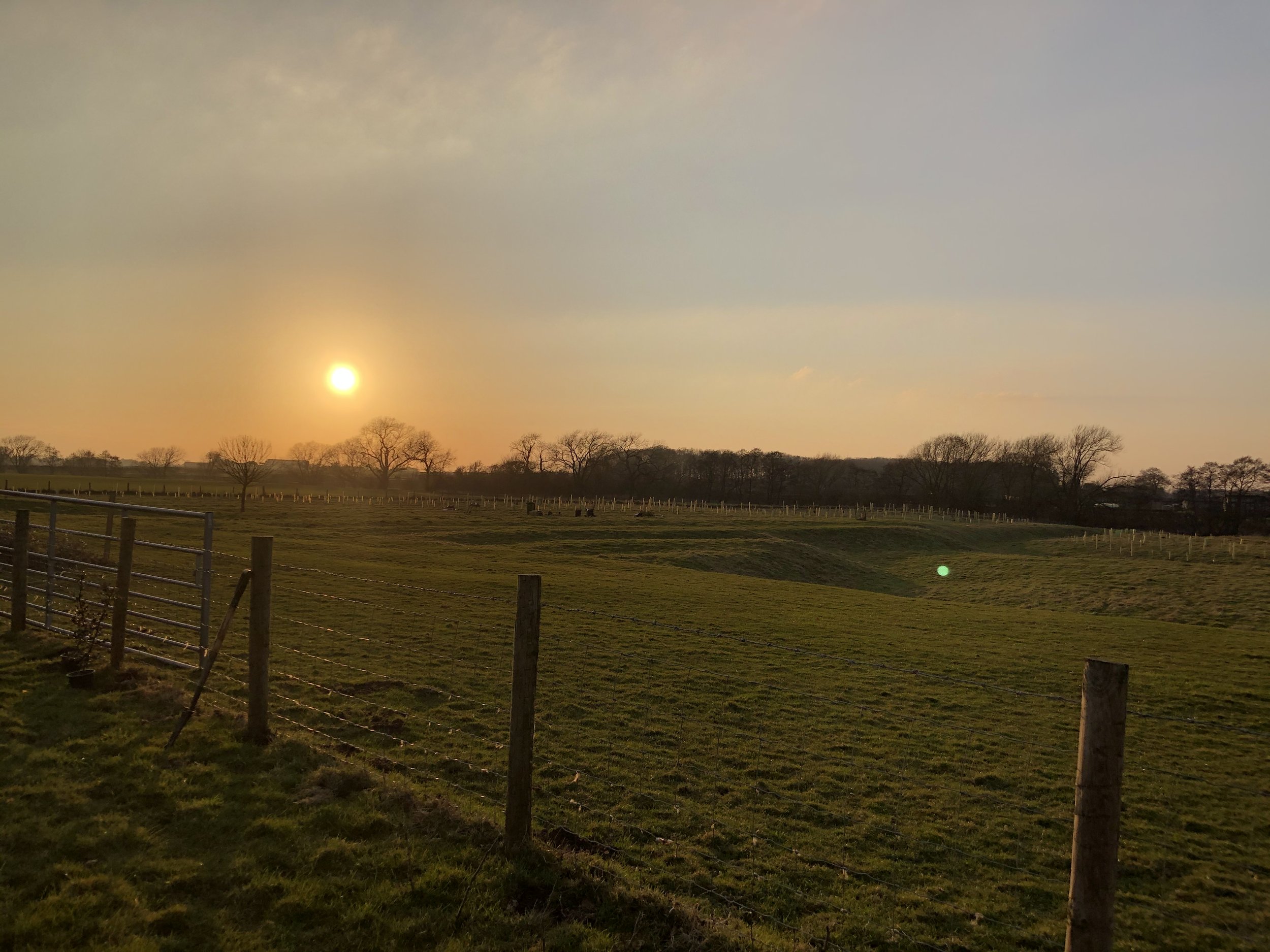A Small Woodland Boasts Impressive 95% Survival Rate After Two Years
In the heart of Yorkshire and the Humber, a transformative project took root in 2021, as Protect Earth joined forces with a dedicated landholder to bring to life a vision of sustainable growth.
Fast forward to 2023, and Protect Earth returned to assess the fruits of our labours. We discovered a flourishing landscape and a remarkable 95% survival rate, defying the odds in an era of unpredictable weather patterns. Join us as we delve into the secrets behind this success, from meticulous planning and local sourcing to the steadfast care the landowners and Protect Earth's vigilant team provide.
Project details
Location: Yorkshire and the Humber
Project footprint: 2.2 acres
Land Under Direct Protect Earth Management: No
Acres of Wildflower Meadows Sown: 0
Kilometres of Hedgerows Planted:
Acres of Ancient Woodland Restoration: 0
Initial plant
In 2021, we visited the Yorkshire and the Humber area to link up with an eager landholder. A plan was put together over a space stretching 2.2 acres, planting 1,227 trees and shrubs.
The two acres were split by a river. On the south side of the river, a new woodland was created. On the other side, hedgerows and shelterbelts were established.
The new woodlands feature a mix of broadleaf and native tree species, creating a diverse environment. Introduce the whole gang; we included: 12% crab apple, 7% sessile oak, 7% rowan, 7% elder, 7% guelder rose, 7% downy birch, 7% holly, 7% blackthorn, 7% hawthorn, 6% common oak, 6% silver birch, 6% alder, 4% wild cherry, and 4% hazel. This combination of plants aims to promote diversity as the woodland matures, blending shrubs and trees.
The shelterbelts planted on the river's north side comprise about 35% of all the plantings. These natural wind deflectors consist of 13% hawthorn, 13% alder, 9% hazel, 9% small-leaved lime, 9% field maple, 9% box, 8% holly, 8% blackthorn, 8% silver birch, 4% common oak, 4% Scots pine, and 4% wild cherry.
We estimate this 2.2-acre newly established woodland and shelterbelt combination will sequester 418 tonnes of carbon by year 50.
Check up
In 2023, we returned to the area to assess how this compact woodland has developed.
The woodland on the river's south side needed careful maintenance to find the sweet spot between growing but not allowing some of the faster-growing shrubs to suffocate the trees. In time, they'll all find their way and learn to cooperate as programmed. For now, as they were all planted together at the same time, they need maintenance.
On visiting the site, we were thrilled to see that 95% of the plants we established in 2021 survive after two years. Many new woodlands experience 30% death rates in their first year. So 95% survival after two years is incredible and happens despite more volatile weather conditions over the past two years - 2022 saw temperatures in the UK hit 40 degrees, and 2023 was an odd year of quite a hot start with quite a cold finish to the UK's summer.
How a success rate of 95% was achieved
Success is down to several factors: sourcing the right trees, diligence on the landowner's part, and some flyby visits from Protect Earth's team.
We aim to understand soil and environmental conditions with all projects, planning a project around this local data. Once a plan is in place on what to plant and how many of each species, our next step is to work with nurseries in that area to get our plants. This step guarantees that what we plant has come from local species, meaning it grows weathered to handle normal local climatic and environmental conditions. This is a solid first step towards success.
We know from speaking with the landowners that they steadfastly maintained their new plants and followed our directions. Part of why 30% of all new woodlands die is due to neglect.
We knew these new woodlands were in good care, but with the more extreme summer weather, Protect Earth also did regular site visits to look at how dry the soil and roots were and do what we could to ensure that this project and others had the best survival chances.
To sum up
95% is an unprecedented rate of success that we hope continues on this site and becomes a benchmark we achieve elsewhere and become known for!
Success comes down to preparedness and diligence, as this woodland exemplifies.
This diligence is further codified in our definition of success.
Please contribute to our land pot to continue developing more natural habitats throughout the UK.



